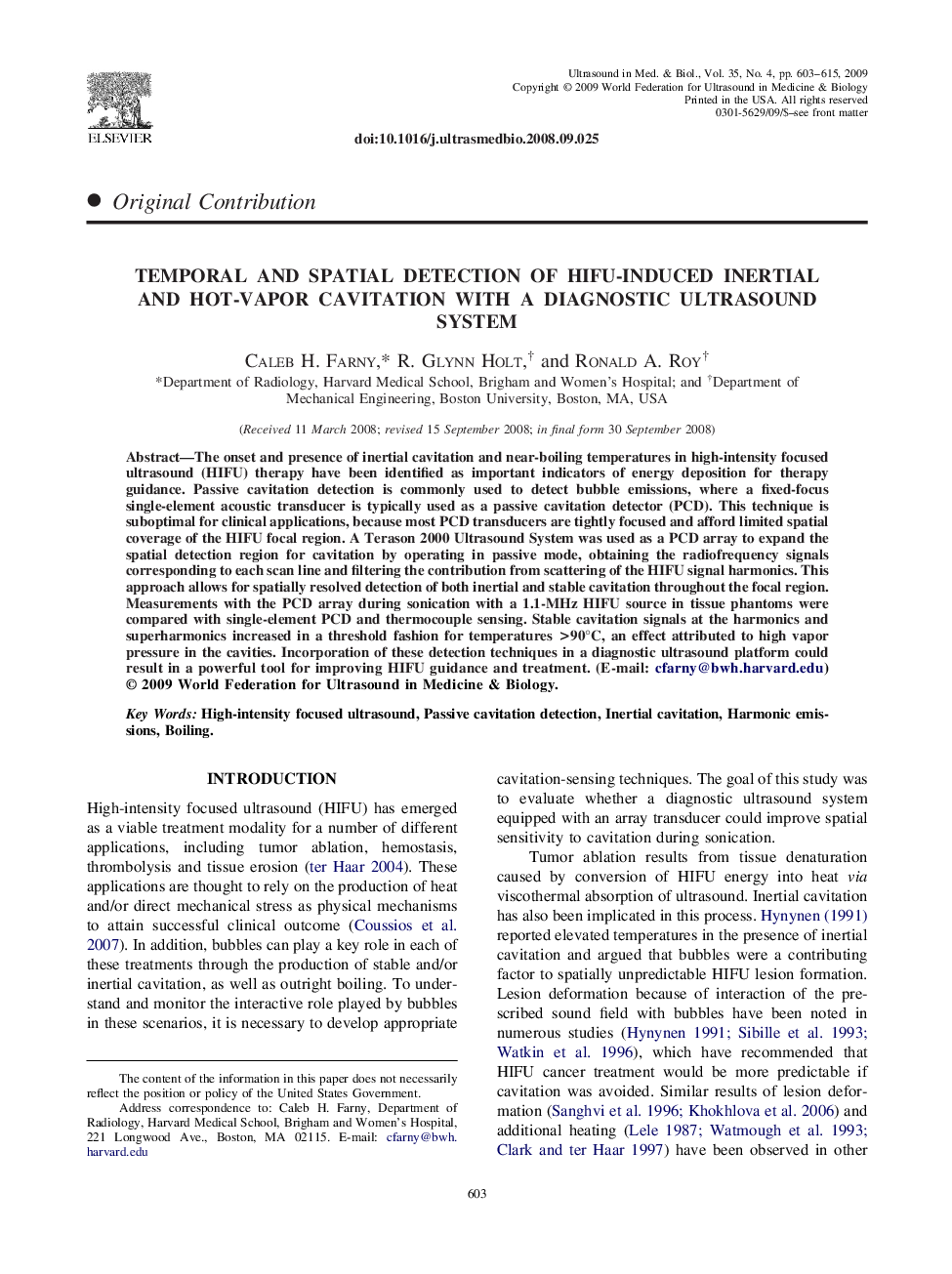| Article ID | Journal | Published Year | Pages | File Type |
|---|---|---|---|---|
| 1762407 | Ultrasound in Medicine & Biology | 2009 | 13 Pages |
Abstract
The onset and presence of inertial cavitation and near-boiling temperatures in high-intensity focused ultrasound (HIFU) therapy have been identified as important indicators of energy deposition for therapy guidance. Passive cavitation detection is commonly used to detect bubble emissions, where a fixed-focus single-element acoustic transducer is typically used as a passive cavitation detector (PCD). This technique is suboptimal for clinical applications, because most PCD transducers are tightly focused and afford limited spatial coverage of the HIFU focal region. A Terason 2000 Ultrasound System was used as a PCD array to expand the spatial detection region for cavitation by operating in passive mode, obtaining the radiofrequency signals corresponding to each scan line and filtering the contribution from scattering of the HIFU signal harmonics. This approach allows for spatially resolved detection of both inertial and stable cavitation throughout the focal region. Measurements with the PCD array during sonication with a 1.1-MHz HIFU source in tissue phantoms were compared with single-element PCD and thermocouple sensing. Stable cavitation signals at the harmonics and superharmonics increased in a threshold fashion for temperatures >90°C, an effect attributed to high vapor pressure in the cavities. Incorporation of these detection techniques in a diagnostic ultrasound platform could result in a powerful tool for improving HIFU guidance and treatment. (E-mail: [email protected])
Related Topics
Physical Sciences and Engineering
Physics and Astronomy
Acoustics and Ultrasonics
Authors
Caleb H. Farny, R. Glynn Holt, Ronald A. Roy,
